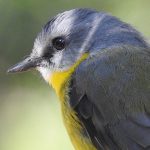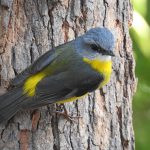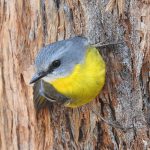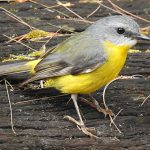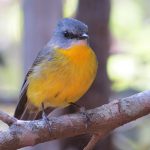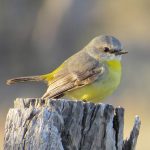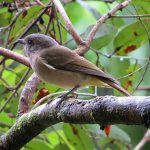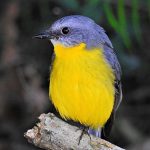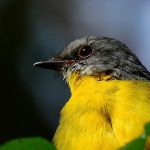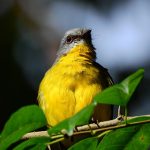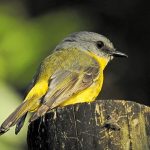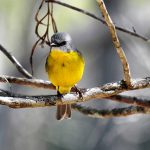EASTERN YELLOW ROBIN
The Eastern Yellow Robin is endemic to Australia. It is a compact bird measuring around 13 to 15cm in length. It has a round head, a relatively large and hooked bill, and short legs. The upperparts of the bird are primarily olive-grey, while the underparts are bright yellow. It has a white patch above the bill, a dark grey crown, and a thin white eye-ring. The wings and tail are dark grey.
It is found in the eastern and south-eastern parts of mainland Australia, including Tasmania. It inhabits a range of habitats, including forests, woodlands, rainforests, and shrublands. It often favours areas with dense vegetation and a mix of open spaces and understory.
This species is known for its distinctive behavior of “hawking” for insects. It perches on low branches or tree trunks and scans the surroundings for prey. When it spots an insect, it flies out to catch it in mid-air before returning to its perch. It also forages on the ground, hopping and searching for insects among leaf litter.
The Eastern Yellow Robin feeds primarily on insects, including beetles, spiders, caterpillars, and other small invertebrates. It may also consume small fruits and seeds as supplementary food.
Breeding season for the Eastern Yellow Robin typically occurs from August to December. The female constructs the nest, which is a cup-shaped structure made of bark, grasses, and other plant materials. It is usually positioned on a horizontal tree branch or a fork in a shrub. Both parents participate in incubating the eggs and caring for the chicks.

